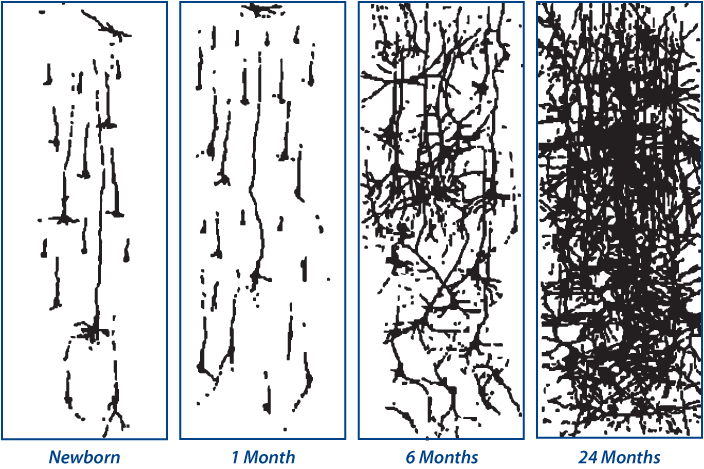Childhood
Ah, childhood. A time of innocence, exploration, and massive synaptic loss.
Sound odd? As you've already seen, the brain kills off extra neurons before it enters the world. If the development of the brain was like making a house, the construction workers would build twice as many rooms as you need and then demolish half of them before letting you in the front door. A similar phenomenon happens with synapses, the connections that link neurons together. Through life, the brain strengthens the best connections and prunes away the weakest. However, this phenomenon is particularly pronounced at two points in your lifeâas a young child facing the world for the first time, and as an adolescent entering the teenage years.
Wiring the Brain
Wiring a brain is somewhat like sculpting a statue. You begin with more than enough stone (in the form of excess neurons before birth and excess synapses during childhood). The craft lies in chiseling away the excess until you're left with the form you want.
The figure shown here compares the connections between neurons from birth until two years. The number of neurons doesn't change. However, as the child develops, each neuron sends out a thicket of dendrites in search of other neurons. It's a bit like a lonely partygoer hunting for friends to talk to.

Figure 10-3.Â
After 24 months, this wave of synaptic growth reaches its peak, leaving a heavily-connected ...
Get Your Brain: The Missing Manual now with the O’Reilly learning platform.
O’Reilly members experience books, live events, courses curated by job role, and more from O’Reilly and nearly 200 top publishers.

